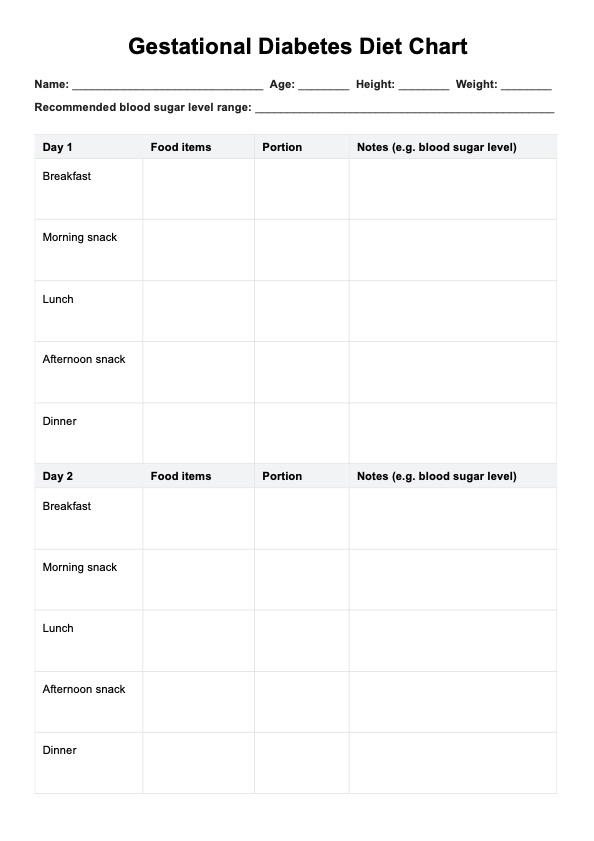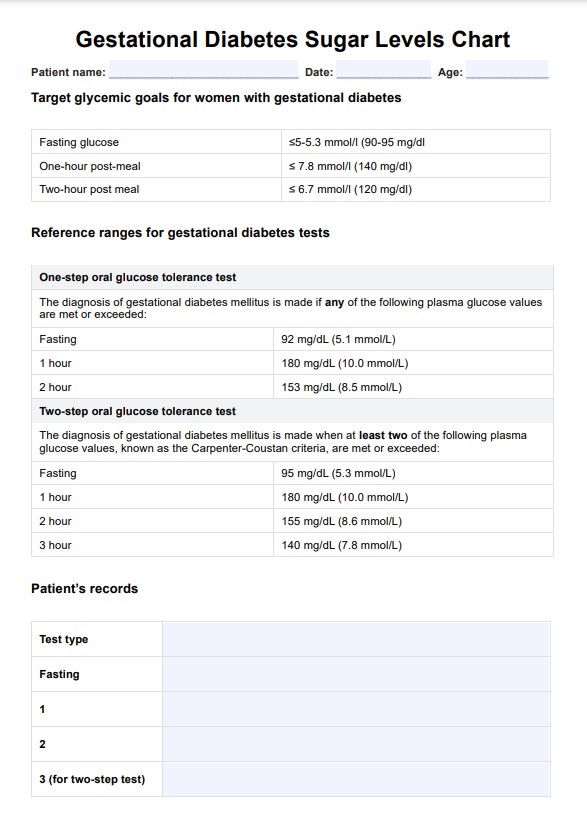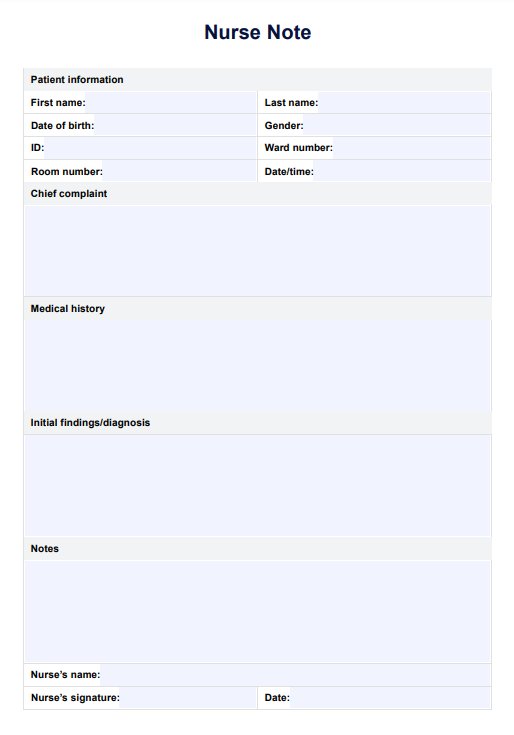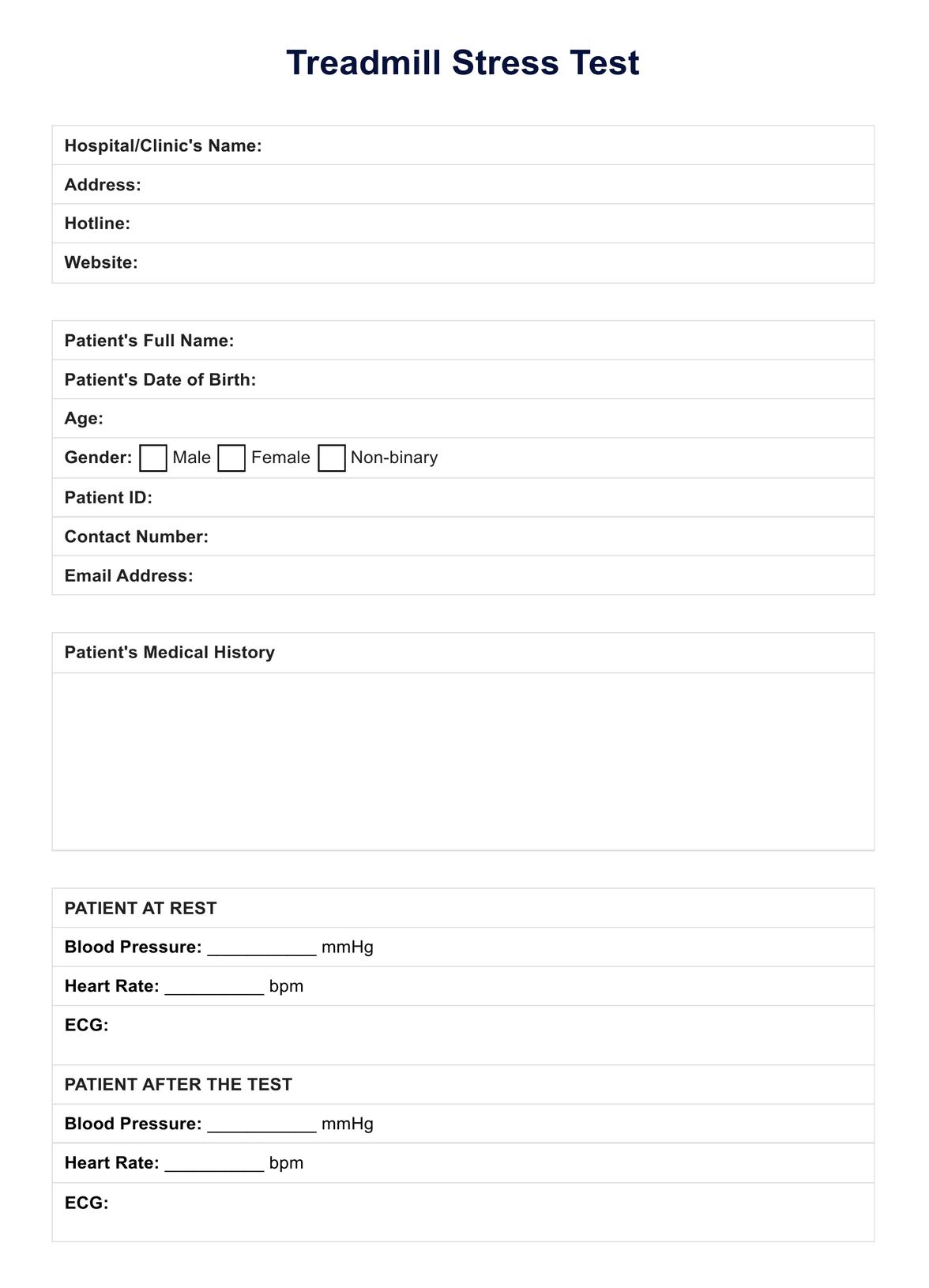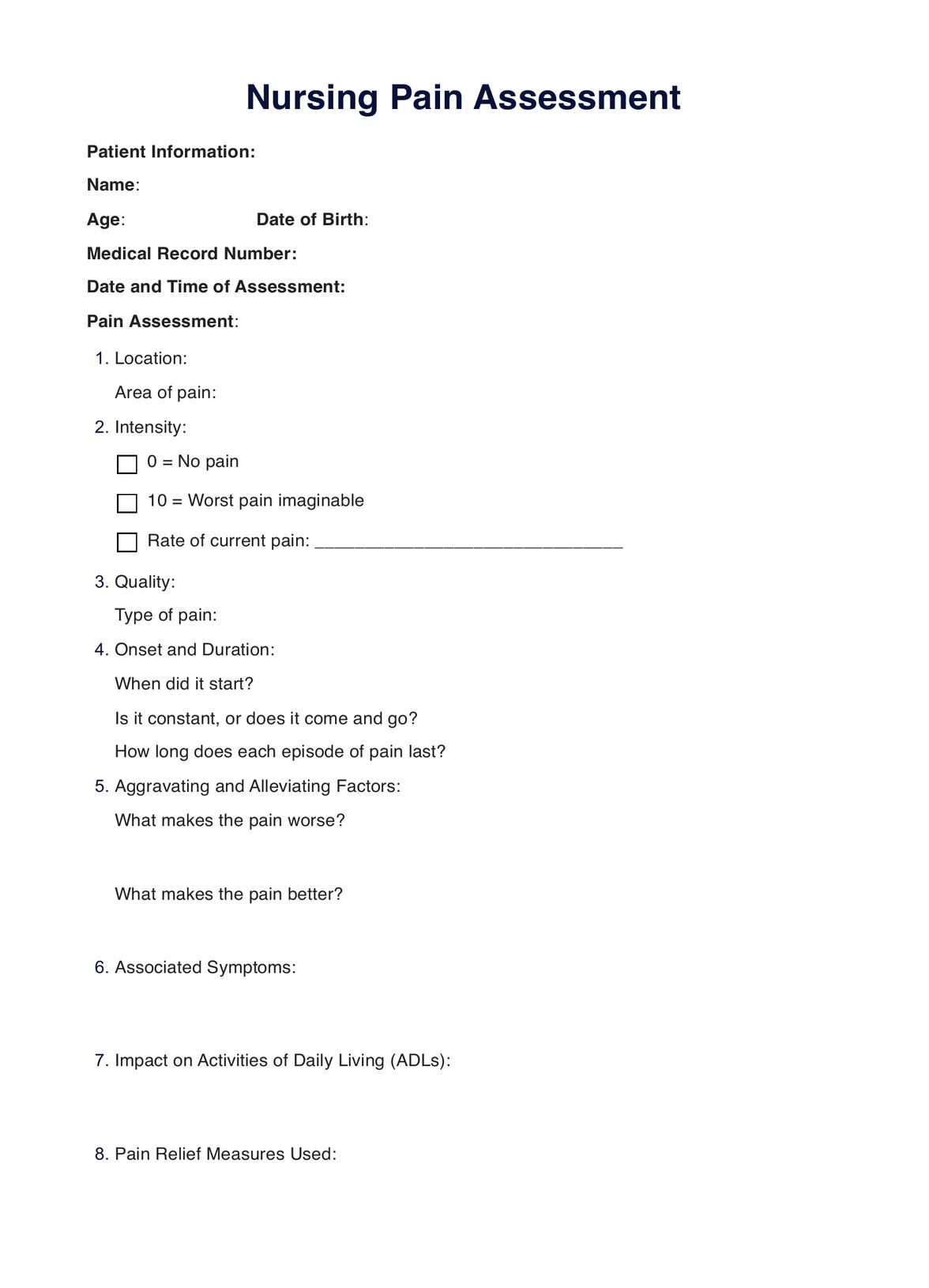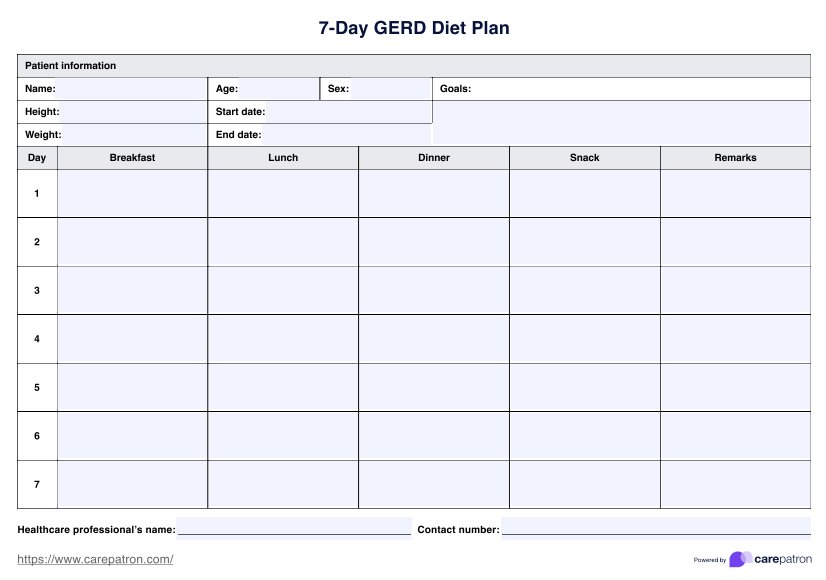Gestational Diabetes Diet Chart
Help your patient better manage their gestational diabetes by planning balanced, blood sugar-friendly meals with them on our Gestational Diabetes Diet Chart.


What is gestational diabetes?
Gestational diabetes mellitus (GDM) is a condition wherein a person without diabetes develops diabetes or has elevated blood sugar levels during pregnancy. Those who have an increased likelihood of developing this condition during pregnancy are those with a family history of diabetes, have a previous history of gestational diabetes, have prediabetes, and are obese or overweight. Aside from those, patients who are over the age of 35 have polycystic ovary syndrome (PCOS) and have previously delivered a large baby.
This condition is diagnosed during pregnancy through a glucose tolerance test conducted between 24 and 28 weeks. During this period, a patient who has gestational diabetes may also exhibit symptoms like increased thirst and urination, fatigue, frequent infections, blurred vision, and slow healing of cuts and wounds. A gestational diabetes diagnosis must be made during this time to better manage the condition through individualized meal plans and monitoring.
Early detection and management can significantly improve the chances of maintaining a healthy pregnancy. Recommended methods of managing gestational diabetes include eating balanced meals, making some lifestyle modifications, and keeping the patient’s blood sugar levels stable.
Gestational Diabetes Diet Chart Template
Gestational Diabetes Diet Chart Example
How does the Gestational Diabetes Diet Chart work?
Our Gestational Diabetes Diet Chart or Gestational Diabetes Diet Plan PDF offers clear guidance on food choices and portion control throughout the day. Here are the steps on how to use it:
Step 1: Download the chart
Download the chart on your device by clicking on the buttons or download links on this page. At this point, it's best to also complete the fields asking for patient and healthcare professional information.
Step 2: Create the gestational diabetes meal plan
Identify what they intend to eat for each meal and specify the portions according to their dietary recommendations. Feel free to give your patient a list of the following types of healthy foods, including:
- Complex carbohydrates like cooked brown rice, whole grain bread, and other types of whole grains
- Low-fat dairy products like milk, yogurt, and cheddar cheese
- Lean protein sources like poultry, fish, and legumes
- Healthy fats like nuts, seeds, avocados, and olive oil
- Fresh fruits and vegetables
In addition to these, you can also include recommendations like to not drink fruit juice or drinks with artificial sweeteners and to avoid sugary snacks, processed meats, fried foods, and high-fat dairy products.
Don't forget also to consider flavor when planning meals. Sometimes, adding something as simple as lemon juice or grated fresh ginger can help enhance the dishes.
Step 3: Record food choices
Complete the chart with food selections, ensuring they adhere to the suggested portions. By documenting choices in the gestational diabetes diet plan template, you can monitor client's daily intake and better manage their blood sugar levels during pregnancy.
Step 4: Regular monitoring and adapting
Consistently utilize the chart to track their dietary habits, making necessary adjustments. Regular monitoring and adherence to the gestational diabetes meal plan are critical to a healthy and well-managed pregnancy.
Templates like diabetes diet chart and meal plan are invaluable resources for managing gestational diabetes. These tools streamline the documentation and planning process, ensuring accuracy and consistency in dietary management. Incorporating these templates into your practice can enhance patient care by providing clear, organized, and easily accessible information. Utilizing these resources effectively supports optimal blood sugar control during pregnancy.
When would you use the Gestational Diabetes Diet Chart?
The Gestational Diabetes Diet Chart that doubles as a meal plan for gestational diabetes can be used in various scenarios:
Upon diagnosis
Immediately after a patient is diagnosed with gestational diabetes, establish a baseline diet plan to help manage their blood sugar level.
During follow-up visits
Review and adjust the diet chart based on the patient's ongoing blood glucose monitoring results and pregnancy progression.
After nutritional counseling
When a patient has received education on managing gestational diabetes, a structured chart is required to apply this knowledge.
In case of dietary non-compliance
A personalized diet chart can provide the structured guidance needed if a patient struggles with general dietary advice.
For patient education
One example is educating patients about the importance of diet in managing gestational diabetes and empowering them to take an active role in their health.
Benefits of having a Gestational Diabetes Diet Chart template
There are a number of advantages to having a Gestational Diabetes Diet Chart template. Some examples are the following:
Saves time
With a ready-to-use framework on your Gestational Diabetes Diet Chart template, you can save both time and effort, thus streamlining the consultation process and improving efficiency in patient care.
Improved patient outcomes
Providing a structured diet plan using our template will help your patient understand and follow your dietary recommendations and lead to better blood glucose control, lowering the risk of complications for your patient and her baby.
Can be used as an educational tool
The Gestational Diabetes Diet Chart can also be used as an educational resource because the patient gets to learn and understand portion sizes, the importance of balanced nutrition, and how to build healthy eating habits.
Track patient's progress
Using a Gestational Diabetes Diet Chart will make it easier for you to track your patient's progress. In addition, it will also be easier for you to make the necessary adjustments to their diet based on their readings and other health indicators. This ensures that you're providing your patient with personalized and effective care.
Commonly asked questions
It is typically requested by pregnant individuals diagnosed with gestational diabetes and is often recommended by healthcare providers.
These are used to plan and track daily meals, making it easier to monitor portion sizes, control carbohydrate intake, and maintain stable blood sugar levels through dietary choices.
The time it takes to create a Gestational Diabetes Diet Chart varies but can often be done within one or two appointments with a registered dietitian, typically lasting 30 minutes to an hour.


